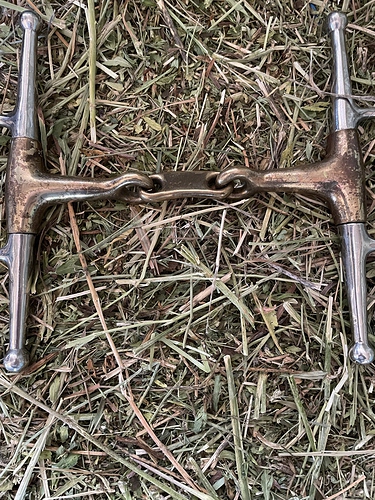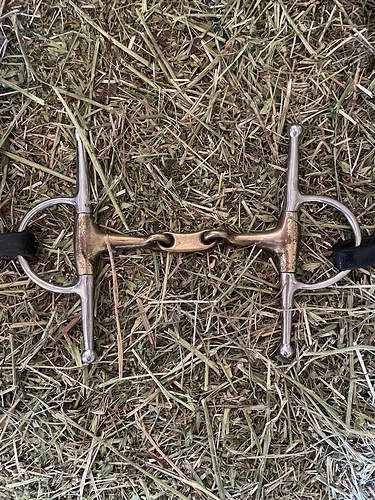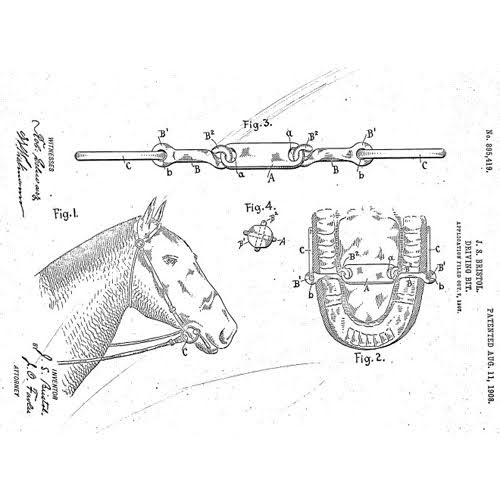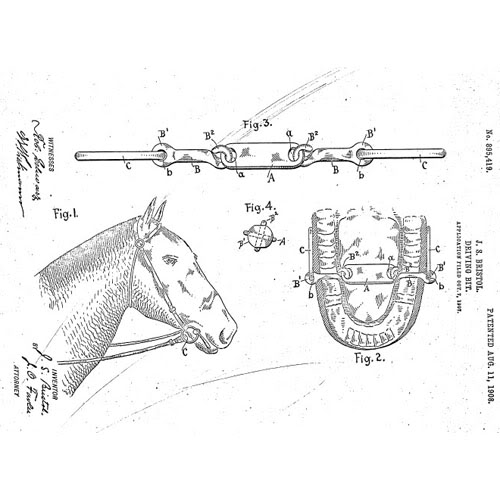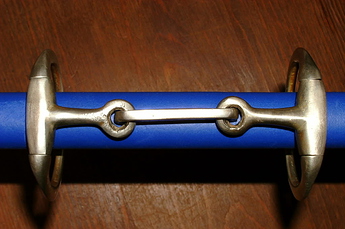I have been given full cheek French link type bit to try out. the lozenge is nearly flat but slightly fuller in the middle, curved on the bottom, flat or slightly rounded on top. The cannons of the bit, as far as I can tell are straight. If I hold the bit one way I can imagine the curved part of the lozonge on the tongue, the rounded flat top at the top of the mouth. In this position the lozenge is tipped slightly back. I think this is the correct position but the things is it could go the other way. Does anyone recognize this bit? I have a full ring French link but the cannons are curved so pretty hard to put it on backwards plus it has little arrow that point you in the right direction. lol
Possibly a neue schule. Can you post a picture?
Turtle Top ?
Sounds like a Dr. Bristol… ?
Picture of said bit is helpful.
Is that a legal bit?
That’s a Dr Bristol. Significantly more “bite” than a regular French link.
ETA the Dr Bristol should be adjusted so that the center flat link is angled back toward the horse, I believe. The slight curve to the center link should be on the tongue.
Also, a Dr Bristol is not dressage legal unless something has changed recently.
Really hard to tell if its a Dr. Bristol or french link without being able to manipulate the plate to see what angles it wants to sit at. Dr. Bristol’s historically had two straight edges on the plate, and french links were pinched in on both sides. That made it easier, but the angle was the thing that mattered. I’m pretty sure both are USEF illegal for dressage.
That’s a Dr Bristol and not dressage legal even though my kids pony loves that bit.
OP says that the center link wants to angle back, which is the part that makes it a Dr Bristol and not a French link, IIRC!
For OP, legality may or may not matter to you, but be aware that the offset center link creates a far harsher bit than it would otherwise appear. It’s not a twisted wire or anything but it does not spread out the pressure the way a traditional French link is designed to do.
This is an interesting article regarding French Link & Dr Bristol
Looking at the diagrams in the article I’d say that the bit pictured by the OP is a french-link as the plate is in line with what would be the bore axis if it was a loose ring.
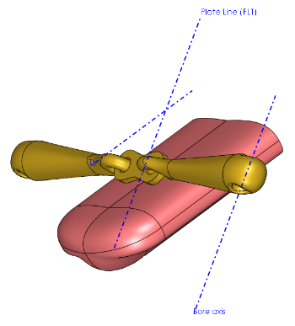
Where as the Dr Bristol sits at a 45 degrees to the bore line
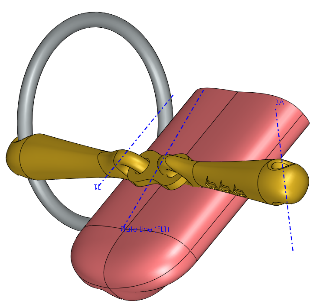
The second bit described could be the Neue Schule with tranz angled lozenge
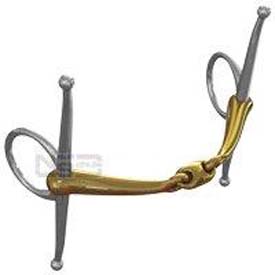
Or depending on how seriously the cannons are curved either the NS starter or verbidend, although I have never seen either of these two in a full cheek. An alternative would be the KK ultra which has an angled lozenge and also the arrow to make sure you fit it the right way round.
Those 2 upper diagrams are problematic 
Here’s one that at least attempts to compare apples to crabapples. The bars are on the same angle showing the comparison of the angle of the middle plates rather than the wonky depiction above where they’ve turned the bars of the bit in the most confusing ‘comparison’ possible.
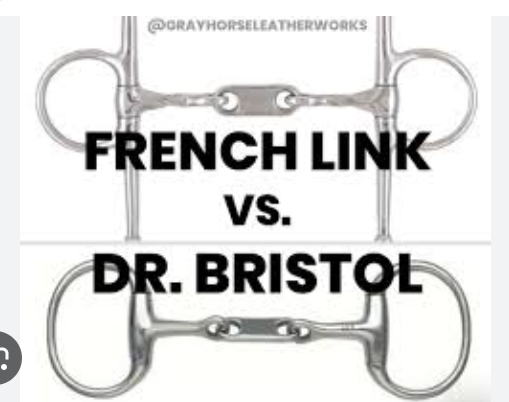
If you haven’t used a full cheek bit before, be careful. It needs keepers, and you have to be vigilant to keep the cheeks of the bit from being caught on anything.
Thank you, that’s how I thought it should be.
For sure there is only one slight convex edge and the top edge is slightly rounded.
Thank you, I didn’t know it was considered that strong. I have a KKK ultra French link loose ring that I have used but she doesn’t have great steering so I wanted the full cheek. She has tried to bolt and run through the bit at times.
I have actually, I start all my youngsters in a full cheek Mullen or double jointed.
My bit is closer in angle to the the French Link although the lozenge is different from either.
I won’t even hazard a guess at what your bit is without a picture. Way back in the day, I used to work in a tack shop. There were loads of bits/combos of mouth and cheekpieces to know back then. There are many, many more nowadays!
This matches yours;
It has always been my understanding that the middle plate on a Dr Bristol was quite a bit longer than the one on a French Link…

